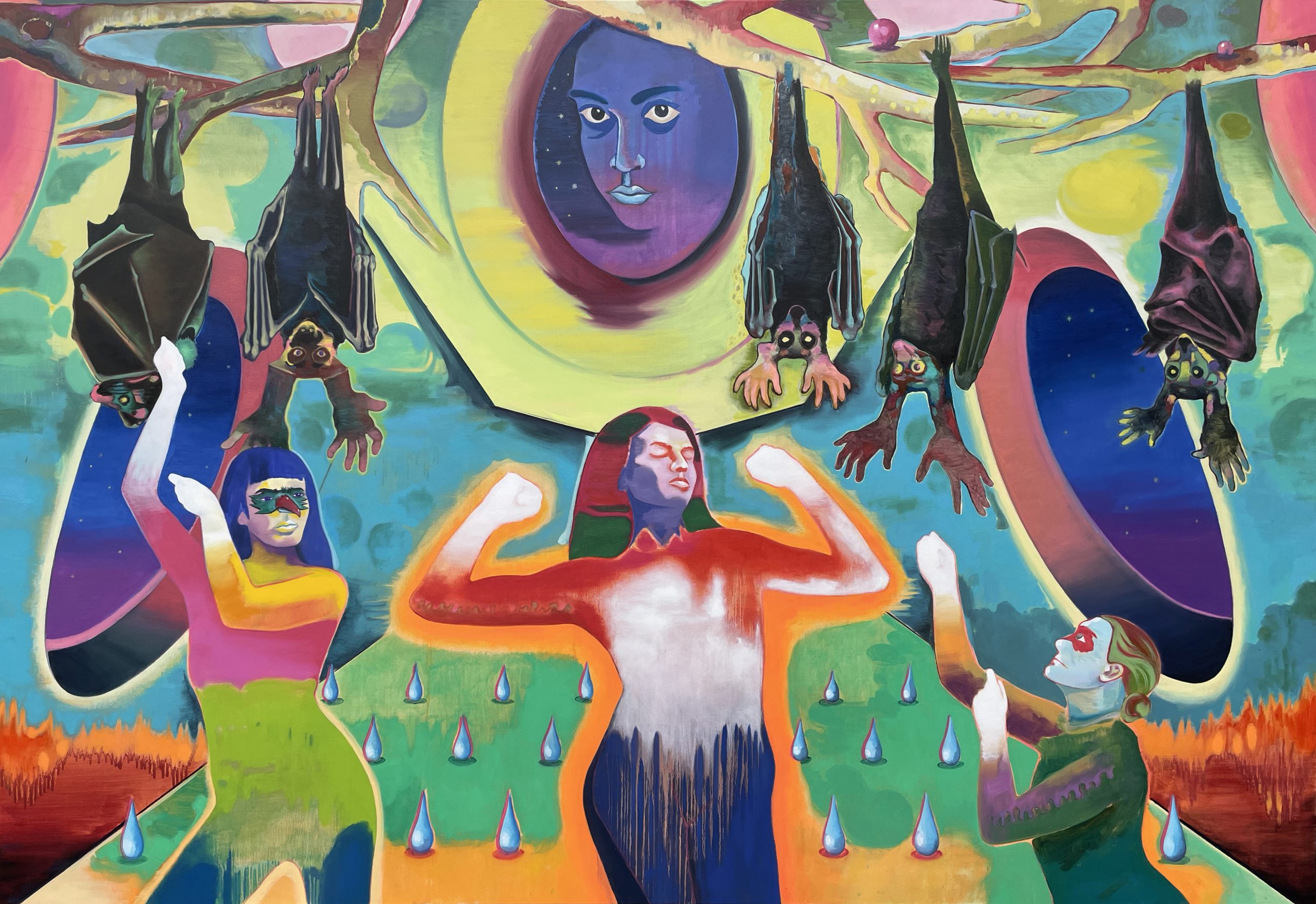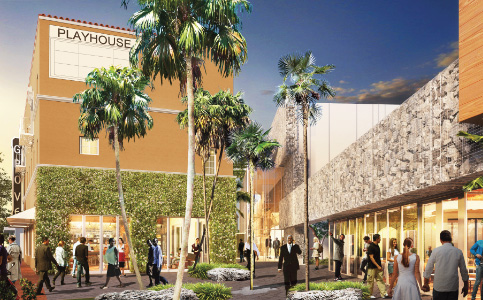Don’t Miss These 5 Galleries Making Their Art Basel Miami Beach Debuts

Art Fairs
These newcomer galleries from Cairo, Warsaw, and beyond, are rising stars on the scene.
Who are the fresh faces making their debut at Art Basel Miami Beach in 2023? Wandering the aisles of the Miami Beach Convention Center this week (through December 10) eagle-eyed art lovers are sure to notice a smattering of first-timers among the fair’s 277 exhibitors—the second biggest edition of the fair to date.
These newcomer galleries—which hail from Cairo to Warsaw—are concentrated mainly in the Nova and Positions sections of this year’s fair. Nova showcases works made within the past three years by one, two, or three artists per booth. Positions, meanwhile, focuses on young galleries showcasing significant solo presentations by emerging artists. For emerging galleries, acceptance into the Swiss fair’s American outpost is an ultimate level-up, opening up valuable avenues to the top echelon of collectors. And the rookie class at Art Basel Miami Beach are proving they have an impressive finesse.
Here are five Art Basel Miami Beach debuts you shouldn’t miss.
Dawid Radziszewski, Warsaw
Krzysztof Grzybacz, Untitled (2023). Courtesy of the artist and Dawid Radziszewski.
Section: Positions
Artist on view: Krzysztof Grzybacz
One of the defining galleries in Poland, Dawid Radziszewski is making its entrance into the American market with a vital young talent, artist Krzysztof Grzybacz. The Krakow-based painter (b. 1993) creates uncanny scenes that seem incongruously bizarre but restrained, nightmarish but tranquil. In one painting, folds of leather and zippers bear a strange resemblance to a human form. In another, a nude figure sits on the edge of a tub, holding a white egg at their back. Painted with a muted palette with an almost animatronic sensibility, these peculiar scenes leave one wondering what’s real and what’s puppetry.
Mrs., New York
Nickola Pottinger, Ah suh dem gwaan (2023). Courtesy of the artist and Mrs.
Section: Positions
Artist on view: Nickola Pottinger
Jamaican-born, Brooklyn-based artist Nickola Pottinger has transformed the booth of beloved New York gallery Mrs. into a ritual feast for the senses. Pottinger presents new paper pulp sculptures she calls “duppies,” which is the Jamaican Patois word for ghosts. These works draw from folklore and mysticism, and are palpably vibrant in person. One, a throne-like bench too delicate for sitting, offers a ceremonial central point for the booth.
To make these works the artist uses family documents for the paper pulp that gives form to her hauntingly anthropomorphic creations. Often these sculptures possess faces, breasts, and feet—all of which have been molded from Pottinger’s own body. Familial objects, too, are incorporated—chairs, hair baubles, and even potholders. Moss adorns several works, and one notices a faint perfume in their presence—that’s frankincense that Pottinger has embedded.
Gypsum Gallery, Cairo
Basim Magdy, A Festive Gathering of Near Extinct Animals and Dead Revolutionaries (2023). Courtesy of the artist and Gypsum Gallery.
Section: Nova
Artist on view: Basim Magdy
Founded in 2013 by Aleya Hamza, Gypsum Gallery is showing the darkly humorous and psychedelic paintings of Egyptian-born artist Basim Magdy. Magdy, who has worked with the gallery since its inception, is best known for his photography, but here the artist showcases six large-scale paintings dominated by bright colors and collage-like arrangements of objects and figures. The paintings carefully undermine first impressions. In one painting, The Dictator and His Cockroach Count Their Blessings Year (2023), two men of power stare out gravely from the canvas. Around them are stage lights, exotic birds, and portable backdrops. “This is about the ways leaders try to make power seem appealing when it’s quite shallow,” said the artist, who was at the booth on opening day. “Colors are one of my ways of drawing people into more complicated stories.”
Luis De Jesus Los Angeles
Installation view of Pacific Gold (2022) at the California Biennial. Courtesy of the artist and Luis de Jesus.
Section: Nova
Artists on view: Edra Soto, Ken Gonzales-Day, and Hector Dionicio Mendoza
In Luis de Jesus’s powerful booth, three Latinx artists explore the landscape in relationship to migration, historicism, and the legacy of colonialism in works crossing sculpture, photography, and mixed media. Artist Edra Soto’s series of “Graft” sculptures reconsider decorative architectural elements found in mid-20th century Puerto Rico, namely rejas (wrought iron fences) and quiebrasoles (concrete breeze blocks). To her lattice-like work, the artist adds viewfinders one can peek through to find photographs of landscapes, still-life, and personal belongings.
In a searing series of postcard-sized images displayed on one wall of the booth, Ken Gonzales-Day has performed interventions on historic scenes of violence in the state of California, erasing the victims and leaving behind only the perpetrators. The images are discomfiting and disorienting. Meanwhile, Hector Dionicio Mendoza has created a large-scale sculptural wall-work of a coyote-human hybrid. Called Pacific Gold, the work originally debuted at the California Biennial and hints at the artist’s personal experiences of life along the U.S.-Mexico border. Beyond the Nova presentation, Luis De Jesus is also showing a luminous monumental painting by Iraqi-American artist Vian Sora in the Meridians section of the fair.
Bradley Ertaskiran, Montreal
Azza El Siddique, Final Fantasy (2023). Courtesy of the artist and Bradley Ertaskiran.
Section: Positions
Artist on view: Azza El Siddique
In a work that pulls between archeology and an imagined future, Sudanese-Canadian artist Azza El Siddique has created the site-specific work Final Fantasy for the booth of Canadian gallery Bradley Ertaskiran. At the center of the installation is a square steel fountain with a central metal column. Water drips from the fountain into the basin below and onto clay vessels the artist has placed there. Some of these vessels have not been fired and as time passes and the fountain continues to drip, the unfired vessels erode while the fired forms change color. On monitors affixed to the fountain’s column, texts from Egyptian and Nubian funerary texts scroll by like a newsfeed. Outside the fountain, flanking the booth, are two Sphinx-like sculptures of Doberman Pinschers. The memorable installation is a moving contemplation of time’s unyielding effects.
More Trending Stories:
Art Critic Jerry Saltz Gets Into an Online Skirmish With A.I. Superstar Refik Anadol
Your Go-To Guide to All the Fairs You Can’t Miss During Miami Art Week 2023
The Old Masters of Comedy: See the Hidden Jokes in 5 Dutch Artworks
David Hockney Lights Up London’s Battersea Power Station With Animated Christmas Trees
On Edge Before Miami Basel, the Art World Is Bracing for ‘the Question’
Thieves Stole More Than $1 Million Worth of Parts From an Anselm Kiefer Sculpture
Follow Artnet News on Facebook:
Want to stay ahead of the art world? Subscribe to our newsletter to get the breaking news, eye-opening interviews, and incisive critical takes that drive the conversation forward.


